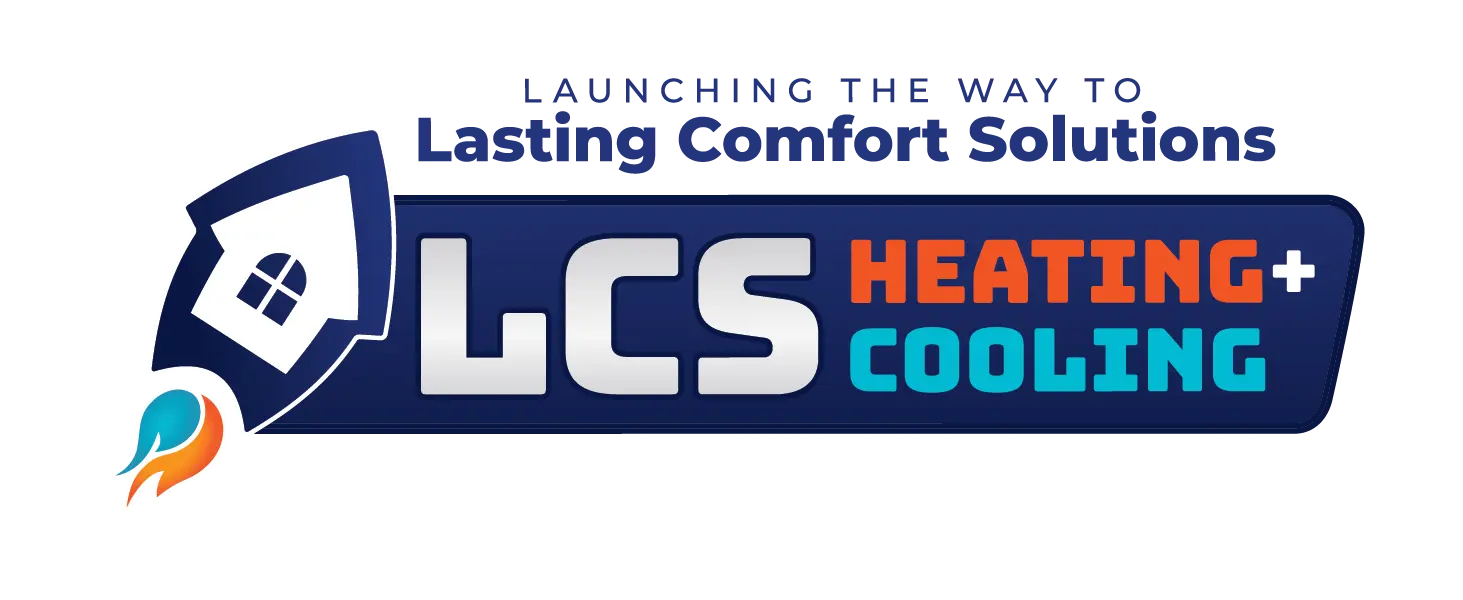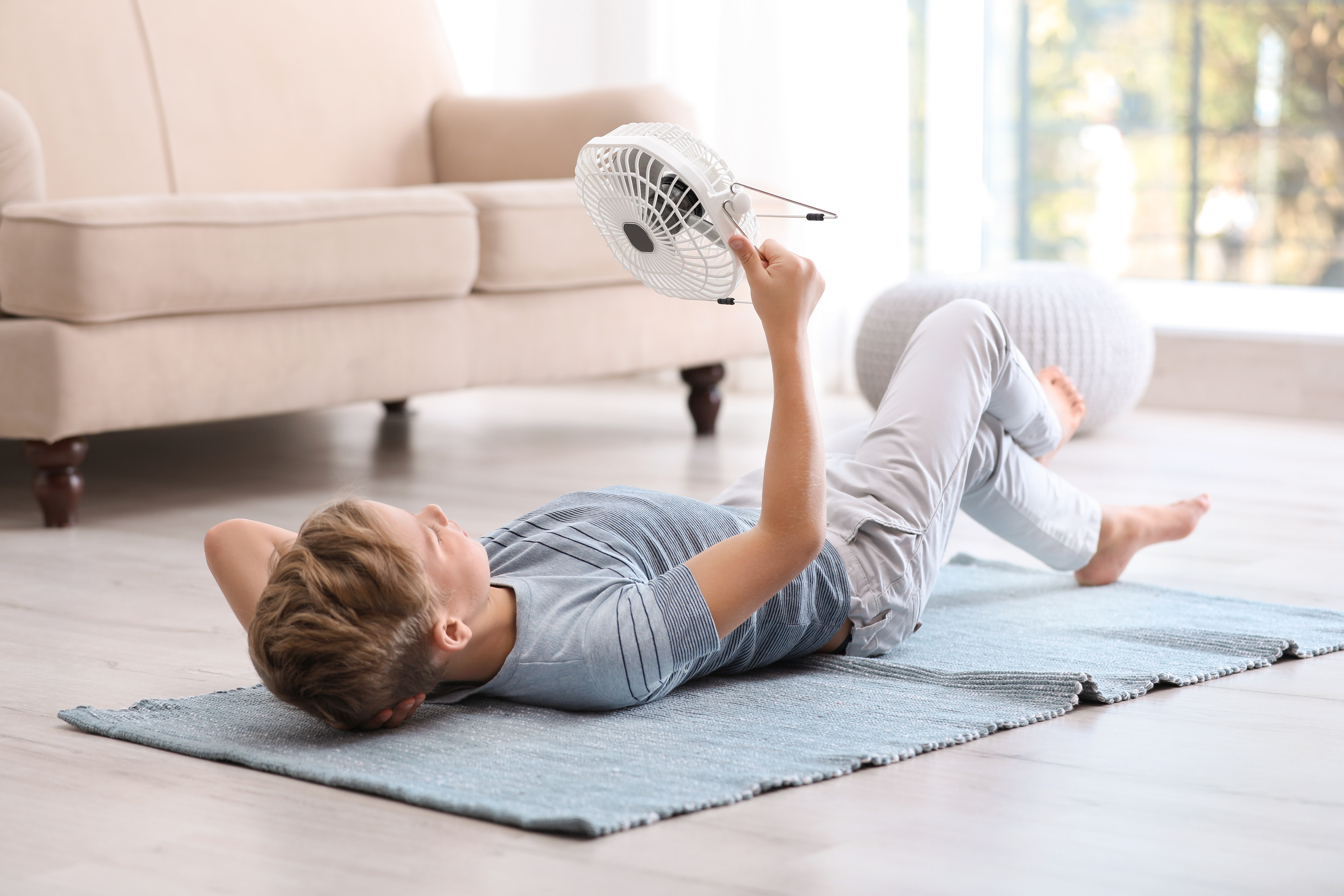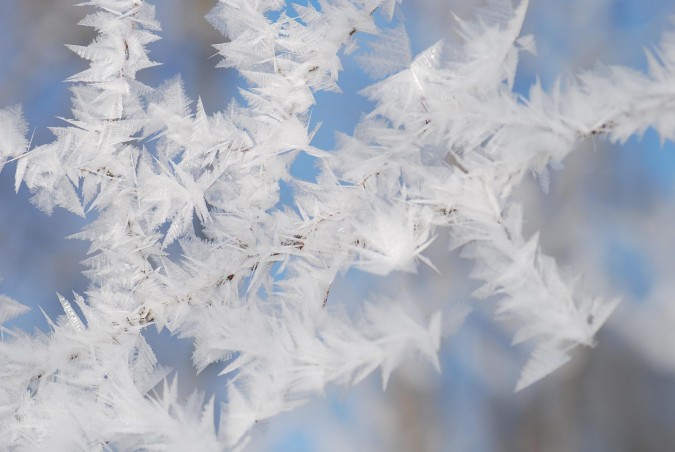With warmer days ahead, you want to make sure your AC is ready to go. Sometimes the long break during winter will stop your unit from running properly when you need it to start up. A little maintenance can go a long way.
Prepping Your AC Unit After Winter
It’s always a good idea to clear any debris around your AC unit before turning it on. Sticks and leaves from the fall and winter can collect around your system and interfere with its air flow and overall function. After you check that area out, take a peek at your air filter. It might be time to swap your old filter out for a clean, new one. This will make it easier for your AC to run.
You’ll also want to make sure your unit has power. If the unit doesn’t kick in after you’ve adjusted your thermostat, go ahead and take a look at your circuit breaker before calling your HVAC company. The switches should be flipped to “on,” so this could be a simple fix if you’re having trouble with your AC. Otherwise, you might be looking at some different issues.
Common Problems Starting Your AC
Some problems that pop up after winter are relatively easy to fix, but others require professional expertise. These are some of the most common hiccups we see with units starting up in spring.
1. Thermostat Problems
Hearing a loud racket when you turn on your AC unit is usually a sign that something isn’t right with your blower motor or fan motor. Of course, if you aren’t hearing anything at all, then you might be having a problem with your thermostat.
The electrical wiring from your thermostat is connected to your AC. Assuming your thermostat has good batteries, you might be facing an issue with some electrical work. An HVAC professional can take a look and let you know what needs fixing.
2. Low Refrigerant
When your unit doesn’t have enough refrigerant, it won’t be able to cool your home. Your HVAC company will have the equipment needed to measure the levels and see if they’re low. Unfortunately, just topping off the refrigerant might not be enough. Your system could have a leak. If your HVAC technician says low refrigerant is to blame, make sure they’ve also done a leak search. You don’t want the issue to repeat itself!
3. Dirty Units
After the “off” season, you might also have trouble with a dirty system. The AC unit itself, also known as the condenser, may have dust and debris inside it. This can mess with the fans and block airflow, just like a dirty air filter indoors. A good cleaning can help.
In other cases, you could be facing a dirty evaporator coil. Older units and equipment that hasn’t been serviced in a while will sometimes run into this problem. Because the coil needs to be completely removed for cleaning, this isn’t something you can handle on your own. You’ll need an HVAC technician to help you out. Still, it’s a pretty quick process.
Plan Ahead with a Spring AC Tune-Up
Letting your unit run when it isn’t working properly can lead to a series of bigger problems. If your unit isn't working for your home, call on your HVAC company. Units that are dirty or need a leak repaired should be addressed sooner rather than later. Typically, these problems can be fixed during your annual maintenance!
Scheduling regular maintenance can keep your unit working its best. A technician can check all of your connections, clean up your unit, lubricate its moving parts, and more. Our LCS Annual Maintenance Plans are designed to help you out.
Getting routine checks with your unit before it acts up can help extend its life. Plus, it’s more convenient than waiting for service when something goes wrong. The temperatures will only continue to rise, and you don’t want to be caught without cool air. Let us know how we can help. Give our team a call at (317) 238-3961.
May 10, 2019
The cool air, turning leaves, and arrival of apple cider at the store mean that autumn’s official start is just around the corner. At home, this seasonal change can quickly translate into higher energy bills. Fortunately, there are a few ways to lower these costs. Staying comfortable in your home—at an affordable rate—is relatively easy when you opt for energy-efficient solutions.
Schedule Your Heating Tune-Up
This time of year, the biggest energy bills for your home relate to heating. In order to get the best efficiency rating for your furnace, it needs to be able to run smoothly. Any problems during this season can be a real issue for your overall costs. But you can catch issues early on by scheduling your heating tune-up. This service helps ensure that all of your system’s components are within the normal operating range. That way, if any part is having trouble, you can have the option to be pro-active for a repair or replacement. And this could save you a service call down the road!
At LCS Heating & Cooling, we offer Annual Maintenance Plans to help keep service and energy costs low year-round. Getting notified of any potential problems lets you stay up-to-date on your furnace’s needs. When you look ahead to winter, no one wants to be caught without heat. A quick visit from your local HVAC company can help you avoid that inconvenience before the cold snap.
Other Home Efficiency Tips for Fall
Once your furnace is in order, you can still work to lower costs in other ways. Adding these efficiency tips to the mix can help you finish the year with extra energy savings. Try them all for the biggest benefits, or just stick to a few to get the ball rolling.
1. Change your air filter
We always recommend preventative maintenance to prep your home. But if you do nothing else this season, replace your air filter. It’s important to swap out your 1-inch air filter every 1-2 months. (The larger 4 to 5-inch media filters can last for 6-12 months.) This simple step goes a long way for your unit’s overall efficiency. A dirty filter can put a lot of strain on your heating unit and make it harder for the warm air to circulate through your home.
2. Warm up with the sun
The days and nights are getting colder, but the sun is still shining. Make the most of sunny days by opening your curtains to let this natural heat inside. South-facing windows tend to have the most impact. Just keep your curtains closed when the sun is set to hold in the warmth, then pull them back in the morning to create some sunny spots. This will help boost your home’s temperature. Plus, it gives your dog or cat a great place to nap!
3. Adopt a smart thermostat
When you want to go above and beyond for your home energy savings, a new thermostat can be a real winner. A programmable thermostat is a great investment because it lets you set schedules for your heating and cooling programs. You’ll get more efficient ratings, for instance, when you tell the heat to drop slightly in the evening, or when you’re away at work. A smart thermostat is even better because you can control your home’s settings right from your phone.
4. Grab some free LED bulbs
Changing your old lightbulbs to LED versions is a fantastic way to cut costs on your energy bills because they use up to 66% less energy. They even last over 20 times longer than standard bulbs. The best part about these updates? You can get LEDs for free! The Free LED Program from Duke Energy will ship bulbs right to your home. The potential savings could be upwards of $100, so there’s no reason to pass up this deal.
5. Watch for home air leaks
Feeling a cold air draft around your windows or outside doors indicates a heating leak. Don’t let these spots add to your energy bill. Adding fresh caulk around these borders or replacing the weatherstripping can prevent your home’s heat from escaping. The other thing to check is your fireplace damper. Make sure to always keep this closed when your fireplace isn’t in use. Accidently leaving it open is just another way to lower your indoor temperature.
Take this advice, and you’re sure to have a more energy-efficient home for the colder months. What’s more, you’ll be able to enjoy upgrades like a smart thermostat during the warmer months as well! If you have questions about other energy savings solutions for your home, give LCS Heating & Cooling a call at (317) 238-3961. We’d be happy to help you out!
September 17, 2018
During the hot summer months, most homeowners don’t expect to find ice on their air conditioning unit. Unfortunately, this issue is more common than you might think, and having ice on your AC is a sure sign that something’s not right. Reviewing the likely causes can help you get your equipment back to its normal working state.
Problems with AC Ice
Once you notice that there’s ice on your unit, you need to turn your AC off. This can help prevent the situation from getting worse. Assuming it’s warm outside, this will help get the ice to melt, too. Let your unit thaw completely, then work through these different scenarios to identify the underlying cause.
1. Poor Airflow
If you’re lucky, the ice on your AC is the result of a more minor issue. After the ice has thawed, the first thing to do is to check is your air filter. Sometimes ice can form on air conditioners when there is poor airflow, so replacing your old air filter with a new one might be all it takes to get your unit running smoothly again.
One of the problems with dirty filters is that they put more stress on your evaporator coil. Reducing airflow over your evaporator coil can then cause your equipment’s temperature to drop below freezing. Consequently, humidity will start to collect around your AC and turn into ice.
Hopefully a new air filter will be enough to remedy the situation. To test this, wait for the ice to melt and then turn your air conditioner on again to see if the ice returns. If it doesn’t—then you’re all set. But if the ice comes back, there might be another problem.
2. Dirty Evaporator Coil
When ice forms even with a new air filter, you might be dealing with a dirty evaporator coil. This can happen with older units or AC equipment that hasn’t had regular maintenance.
In this case, you’ll want to turn the equipment off again and call on an expert to come clean the evaporator coil. Unfortunately, this isn’t something that homeowners can do on their own. The process requires a tech to fully removing the indoor coil to clean it, before re-installing.
Continuing to run your AC unit when this part isn’t working properly can cause a chain reaction of other issues. Rather than risk damage to your compressor or other AC parts, it’s best to call your local HVAC company to take a closer look. Odds are, they’ll be able to remedy the situation pretty quickly with by either cleaning your evaporator coil. Otherwise, they might have to take a look at your refrigerant levels.
3. Low Refrigerant
Systems that have low refrigerant aren’t able to keep the evaporator coil within the proper temperature ranges. If you have an issue with refrigerant—and not the coil itself—your AC unit probably has a leak.
Simply topping off the refrigerant isn’t usually enough to fix the issue. In fact, if you just add refrigerant without testing for a leak first, you might just be wasting money. Depending on the leak size, it could take several months of just a couple of days to have the problem come back. So, it’s a risk. (Plus, companies don’t provide a warranty on refrigerant, especially without a leak search and repair.)
For these reasons, it’s important for your HVAC technician to check for leaks whenever your refrigerant levels are low. If your tech can find the leak and repair it, you’ll be able to avoid other costly replacement parts. A detailed review of your system can help you figure out what’s wrong.
4. Broken Motors
The last reason you might have ice on your AC unit is if a blower motor or your fan motor is going out. These issues can also cause your system to freeze up due to restricted air flow. (Though this is different than poor air flow just from a dirty filter.) As with dirty evaporator coils and refrigerant leaks, if your motor has gone out, you’ll need an HVAC tech to come by for some repairs.
Time for AC Repair?
As soon as you realize that there’s ice on your AC unit, remember to turn your system off. Continuing to use your home’s air conditioning can just make matters worse. Replace your air filter as the ice thaws. That way, if the ice returns, you’ll know you need to call your local HVAC company to take a peek inside the unit.
If you’re located around the Indianapolis area, know that our team at LCS Heating and Cooling has got your back. We’re here to help you out whenever you notice issues with your AC in the summertime. Hopefully the ice on your AC is just the result of poor airflow from a dirty filter. But if the problem is more complicated, our team will make it right.
We know HVAC repairs can be annoying to deal with, but our expertise can get your home back to normal without too much downtime. For any questions about your air conditioner repairs and other function, just call LCS Heating and Cooling at (317) 238-3961. Summer is supposed to be enjoyable—we’ll help you keep it that way!
June 28, 2018
leaves in fall and the brisk air in winter. Come spring and summer, though, it’s another matter entirely. Poor indoor air quality during this time of year can feel either humid and stuffy, or terribly stale. A lot of people will crack open a window to try to fix the situation. But there’s a much better (and more efficient!) way to address your stale air problems.
Why Does the Air Feel Stale?
Stale air is created in a number of different ways. Some of the most common causes are from lack of ventilation and various contaminants. The odors and allergens from commercial cleaning products and dust mites are a big no-no for fresh indoor air. But without a good filtration system in place, it’s hard to keep these issues at bay. They just keep adding up to create that lingering stale air vibe.
Another reason your air can feel stale is because of improper humidity levels. Over time, poor circulation can make your indoor air feel even more stuffy. You need to introduce fresh air into your home and workspace to keep them from turning into “stale and stagnant” environments. Fortunately, adjusting your indoor humidity and making sure your ventilation system is efficient and clean can go a long way. A little maintenance or a couple upgrades are usually all it takes to get clean indoor air every day of the year!
4 Ways to Fix Stale Air
There’s no sense to live with uncomfortable indoor air. In fact, those conditions can be a real problem for productivity. Multiple studies have shown that poor ventilation reduces cognitive functions. To feel your best, it’s important to breathe good, clean air. You can help get your indoor air quality up to par with these solutions—listed in order of Okay, Good, Better, and Best:
1. Open a window—but not for too long.
If you’re struggling with stale air, you can always open a few windows. Just remember, this won’t be a real long-term solution. For one, this can add a bunch of sticky humidity to your indoor air. Opening the windows can also let a whole bunch of allergens fly inside. Pollen, dust, and other unwelcome odors (the neighbor’s lawnmower exhaust, for example) can slip into your space without the right filtration. Then you’re stuck with a bunch of other problems! Plus, leaving your windows open while the AC is running can be real energy waste. The money spent on cooling your space then, essentially, just floats outside.
2. Turn on the fan.
Another option is to put a new air filter into your HVAC unit and turn on your ceiling fan. Better yet—put your thermostat on its “Fan Auto” setting! Then you can recirculate the air without introducing new allergens to the mix. The counterclockwise direction on your fan can help push the cool air down to keep the space feeling fresh. This setup can be a great “quick fix” to kick off the new season.
3. Change your air filter.
A better way to improve your air is to put in a new filter. This can allow your AC to work more efficiently. Remember: 4 to 5-inch media filters should be swapped out every 6-12 months, but 1-inch air filters should be changed every one to two months. If you live in an area that has lots of construction going on or fields being plowed, you might need to change your filter more often. Putting in a new filter every month, or even every couple week might be necessary depending on your conditions. If you haven’t checked yours in a while, it’s probably due for a change.
4. Invest in a new filtration system or dehumidifier.
The best way to fix stale air problems is to clean up your indoor air around the clock. Homes and office spaces that are tightly-sealed sometimes need special systems installed. The right HVAC equipment will work to improve your indoor air by cycling it with filtered air from outside. But you might also want a new air cleaner or an add-on unit to tackle humidity issues. If you’re sick of stale air, these are great upgrades to help you breathe easy. Talk with your local HVAC company to find the best energy-efficient system for your layout!
Schedule an Indoor Air Quality Review
For the ultimate spring cleaning, don’t forget about your indoor air quality. The air we breathe affects us every minute of every day, so it deserves special attention. Ventilation problems with older homes and buildings can definitely take a toll. These environments can even cause different health issues, including headaches, eye irritation, and coughing. Typically, these problems are grouped together and referred to as sick building syndrome. The same issues from poor ventilation can also show up in your home.
When changing your air filters and turning on the ceiling fan aren’t enough to fix your stale air problems, it’s time to call on your local indoor air quality professionals. A quick review of your existing ventilation can help determine any problems spots that need improving. An upgraded air cleaner, dehumidifier, or ventilation system might be all you need for a truly refreshing, healthy lifestyle! Contact LCS Heating and Cooling today to learn more.
March 21, 2018
Indoor air quality in winter can leave a lot to be desired. It’s easy to tell when our home’s temperature is too cold, but what about when the air gets too dry or dirty? Being cooped up inside can make us forget what clean air is actually like.
This time of year, it helps to check a few filters around your home. (That’s right—there’s more than just one air filter!) Get these areas cleaned up now, and you should be able to breathe easy until spring.
1. HVAC Air Filter
It’s important to replace your air filter consistently year-round, but this is even truer in the colder months. Furnaces get a lot of use in winter, and a dirty filter will only make it harder for your system to cycle air. Replacing your filter can help keep your HVAC unit from over-working itself.
Most homes that use 1" filters (and especially ones with pets) need to swap out their filters monthly. Homes with media filters (4"-5" filters) don't need to be changed as often, but should still be checked every 6 months. This helps prevent dust from clogging your system. So when the heat kicks in, your indoor air quality should be nice and fresh. Plus, clean filters can improve your unit’s efficiency in winter. You get cleaner air—and a lower energy bill.
2. Kitchen Range Hood Filter
For the home chefs out there, if this filter isn’t already on your cleaning rotation, add it now. This quick chore can help a lot with lingering food odors—especially in winter. Baking cookies is great, but we don’t want every smell from the kitchen to linger forever!
Cleaning these filter screens is pretty straightforward. You just find the screens under your range hood, pop them off, and wash them in your sink. Mix extra hot water with de-greasing dish soap and let the filters soak for 5-10 minutes. Then grab a plastic brush and start scrubbing. Rinse thoroughly, and let the filters air dry. They should only be re-installed when completely dry, so don't rush the process if they're even slightly wet. Once they’re squeaky clean, you should be able to save time by washing them monthly in the dishwasher.
3. Bathroom Exhaust Fan
The ventilation system in your bathroom also deserves some attention. While the fan may not have a “filter” in it per say, it still works to keep your home air clean. It draws out moisture and helps prevent mold and mildew from creeping around your shower space. Inspect the exhaust cover regularly to keep the airway clear.
To clean your bathroom vent, all you need is a vacuum with a dusting brush attachment. Make sure the fan is off (or flip the circuit breaker) and pull the vent fan cover down from the ceiling. There will probably be a couple clips holding the fan cover in place. Just move those aside to detach it. Then carefully vacuum around the fan and motor, and detail-clean the grille cover itself. Replace the cover, and you’re done!
If you have a whole house humidifier, there's an additional filter you need to check this season. Most whole home humidifiers have a filter pad that needs to be changed once a year. It can be easy to forget! But when you’re an Energy Savings Plan member with LCS Heating & Cooling, we can take care of the filter replacement for you. It’s an easy option to add to your annual maintenance visit.
For any other HVAC repairs or air quality issues you might have this winter, please don’t hesitate to contact us. We pride ourselves on our customer service and are always happy to help with your air quality and heating questions!
January 25, 2017
We all know Indiana winters are unpredictable, but it can be pretty difficult to stay warm when temperatures drop unexpectedly. If you find yourself cranking up the heat, consider some of our budget-friendly solutions. These tricks will help keep your home warm during any cold spell.
1. Replace your dirty air filters.
A dirty air filter may not cause you any problems when the weather is mild, but it’s definitely something to check in winter. If we’ve got cold or freezing temperatures outside, your filter could very well be your biggest roadblock to a toasty home. Before you blame your furnace for the lack of heat, be sure to take a quick look at your filters.
Dirty filters restrict air flow and make it harder for your furnace to keep up without using loads of energy; and if your filters are old and dirty, there’s a good chance your furnace won’t be able to raise your temperature at all. Changing your filters regularly, and making sure to check them in the colder months is definitely a smart way to help your furnace run efficiently.
2. Check your attic insulation.
Proper insulation saves energy and makes your home resistant to heat loss by creating a barrier between your warm home and the cold outdoors. One easy way to see if your home is losing heat is to compare the amount of snow left on your roof to your neighbor’s. If your snow is melting fast, you’ve probably got poor insulation. Even if your furnace is working fine and your thermostat is set to high heat, you might still feel cold because all the heat is escaping to uninsulated areas. Warm air rises and escapes to your attic space if it’s not insulated—meaning your furnace is heating your roof instead of the rest of your home!
Check your attic space in winter to make sure you’re not losing heat to poor insulation. The U.S. Department of Energy has a few tips for insulation, but a good rule of thumb is to make sure your attic’s insulation is at least 12 inches thick. One of the most effective ways to insulate your home is to make sure your attic access door is insulated—plus it’s a really cost-effective fix!
3. Keep your thermostat at one temperature.
This low-tech solution is kind of counterintuitive, but it’s our best advice for battling freezing or below-freezing temperatures outside. In milder months, a lot of homeowners like to lower their thermostat temperature at night to save on energy. When we’ve got really cold, or even record breaking cold weather though, it’s hard for your furnace to make up even a 5 degree difference from nighttime to daytime.
Rather than get stuck with a cooler temp in the day, we suggest leaving your thermostat on a set temperature in winter that’s comfortable for both day and night. If you have a programmable thermostat, try using the “hold” function for your ideal temp. This is a great feature that helps your home stay warm 24/7 without any temperature fluctuations or thermostat checks. A programmable thermostat even helps you control energy costs, and can cut your heating costs by 35%.
If your home is still extra-chilly in the winter months, you can always call on your local HVAC company to help you solve the problem. A specialist can help you review your home’s current setup and make sure all your heating components are working at their best levels.
And if for some reason your furnace actually quits on you in winter, please call your local HVAC specialist right away! It doesn’t take long for your home’s temperature to drop drastically low if your furnace stops working, so be sure to put in a call ASAP. There might be a lot of other homes without heat too, so you’ll want to get on the technician’s list early so your home can go back to being cozy and warm.
February 1, 2016






